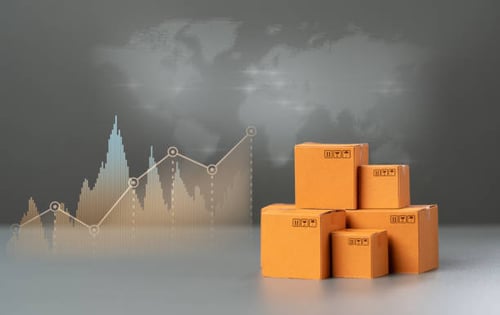
Navigating Tariffs with Confidence: APS-Driven Strategies for Supply Chain Managers in Packaging Manufacturing
Tariffs and trade policies have become increasingly volatile, turning once-stable supply chains into strategic puzzles. For Supply Chain Managers in the Packaging and Containers Manufacturing industry, navigating the landscape of shifting tariffs and trade barriers requires more than traditional planning—it demands advanced tools, dynamic visibility, and collaborative agility.
In this new landscape, Advanced Planning and Scheduling (APS) platforms like PlanetTogether, integrated with robust ERP systems such as SAP, Oracle, Microsoft Dynamics, Kinaxis, or Aveva, offer a lifeline. These technologies enable a more resilient, responsive, and optimized supply chain—precisely what’s needed to withstand and even capitalize on the challenges tariffs present.
This blog explores tariff mitigation strategies for packaging manufacturers, with a focus on how integrated APS and ERP systems can help manage costs, maintain profitability, and turn uncertainty into competitive advantage.
The Challenge: Tariffs as a Supply Chain Disruptor
Globalization has brought vast sourcing opportunities—but it’s also introduced risks. Tariffs can drastically inflate material costs, shift supplier dynamics, or render long-standing sourcing strategies obsolete overnight.
In the packaging and containers sector, where cost margins are tight and materials like aluminum, plastic, paperboard, and coatings often traverse borders, even a small tariff change can:
Spike input costs
Disrupt supplier contracts
Trigger emergency resourcing
Delay customer deliveries
Without adaptive planning capabilities, companies are left scrambling to make decisions manually, often reactive rather than strategic.

Strategic Response: The Role of APS in Tariff Mitigation
Advanced Planning and Scheduling systems like PlanetTogether provide a centralized platform for synchronizing production and procurement strategies with tariff-related variables. When integrated with ERP systems like SAP, Oracle, Microsoft, Kinaxis, or Aveva, this setup empowers real-time decision-making across departments and continents.
Dynamic What-If Scenario Planning
With tariffs fluctuating by region or product category, scenario planning is no longer a luxury—it’s a necessity. PlanetTogether allows supply chain managers to simulate multiple sourcing and production scenarios:
What if tariffs rise by 10% on imported plastic from Country A?
What if we switch to a local supplier at a higher unit price but no tariffs?
What if we delay production until tariffs reset next quarter?
These simulations, when fueled by live ERP data, help managers weigh trade-offs between cost, timing, inventory, and customer commitments.
Sourcing Flexibility through Multi-Site Planning
Tariff mitigation also depends on geographic flexibility. PlanetTogether’s multi-site planning features—especially when integrated with platforms like SAP S/4HANA or Oracle SCM Cloud—allow companies to:
Shift production between plants in tariff-friendly regions
Source from alternative suppliers dynamically
Reduce reliance on any single trade corridor
This is particularly relevant for global packaging operations manufacturing across the Americas, Europe, and Asia, where policy shifts can vary by jurisdiction.

Integration in Action: APS + ERP = Tactical Agility
A core advantage of using PlanetTogether in sync with ERP systems is the closed-loop data flow between planning and execution. Here’s how it works in practice:
Real-Time Tariff Cost Calculation
ERP platforms like SAP or Oracle track tariff codes and associated duties at the material level. By feeding this data into PlanetTogether’s scheduling logic, production orders can be recalibrated instantly based on real landed costs.
For example, if importing polyethylene from Asia incurs a 25% duty hike, the APS can automatically reprioritize existing domestic resin inventory or reroute orders to alternate production sites.
Coordinated Procurement and Production Planning
Supply chain managers can align purchase order timing with production windows more intelligently. Integration with Kinaxis or Microsoft Dynamics allows forecasts and supplier lead times to interact directly with APS-generated production schedules.
This helps minimize overstocking during high-tariff periods and maximizes procurement during tariff lulls, balancing inventory risk and cost exposure.
Supplier Performance and Risk Visibility
ERP systems already collect supplier KPIs—on-time delivery, quality, and cost metrics. With that data embedded in PlanetTogether, supply chain teams can apply weighted logic to not only optimize cost but also mitigate risk:
Prioritize suppliers with stable delivery timelines during uncertain trade policy windows
Diversify sourcing portfolios based on risk scores and tariff exposure
Trigger alerts when dependencies on high-tariff zones cross thresholds
Long-Term Strategy: Building a Tariff-Resilient Supply Chain
While some tariff policies may ease, others may emerge. Long-term resilience requires building tariff mitigation into your standard operating model. Here’s how:
Build a Diversified Supply Base
Use ERP-APS synergy to segment suppliers by tariff impact, performance, and strategic value. Diversification isn't just about backup—it’s about flexible, tariff-conscious sourcing.
Localize and Regionalize When Feasible
PlanetTogether helps model the cost-benefit of moving production closer to end customers or sourcing locally. Integrating with Aveva can even assist in facility-level planning for CapEx projects tied to localization.
Continuous Monitoring and Adjustment
With real-time updates from ERP systems and forecasting tools like Kinaxis, PlanetTogether enables continuous adjustment. Automated alerts, integrated dashboards, and predictive modeling allow managers to shift from reactive firefighting to proactive leadership.
From Vulnerability to Agility
In today’s volatile trade environment, tariffs aren’t a passing inconvenience—they’re a permanent fixture. But for Supply Chain Managers in packaging manufacturing, they can also be a catalyst for transformation.
By adopting PlanetTogether APS integrated with ERP systems like SAP, Oracle, Microsoft Dynamics, Kinaxis, or Aveva, companies can:
Gain end-to-end supply chain visibility
Simulate and respond to tariff fluctuations in real time
Optimize production and procurement strategies with precision
Build a more resilient and cost-effective operation
Tariff mitigation is no longer about cutting losses—it’s about strategically optimizing your entire supply chain architecture. And with the right tools in place, packaging manufacturers can do more than survive tariff shifts—they can thrive because of them.
Are you ready to take your manufacturing operations to the next level? Contact us today to learn more about how PlanetTogether can help you achieve your goals and drive success in your industry.